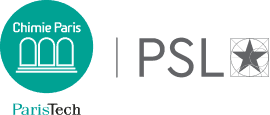
Engineering Nanocellulose Hydrogel Structure for BioMedical Applications Gil Garnier1, Vikram Raghuwanshi1, David Mendoza1, Joel Hooper2
1Department of Chemical and Biological Engineering and BioPRIA, Monash University, Clayton, VIC, Australia
2School of Chemistry and BioPRIA, Monash University, Clayton, VIC, Australia Nanocellulose is the most abundant and cheapest family of organic nanoparticles.
Prof Gil Garnier from Monash University will visit the lab next Friday June 20. He will give a talk on « Engineering Nanocellulose Hydrogel Structure for BioMedical Applications » in amphi Boreau at 11h00, ESPCI Paris-PSL.
Available at different length scales from the deconstruction of the plant cell wall, some bacteria and micro- organisms, nanocellulose is found as NanoCellulose Fibers (NCF), Cellulose NanoCrystals (CNC) and Bacterial Cellulose (BC). Hydrophilic and polar, thanks to its 3 hydroxyl groups per glucoside monomers, nanocellulose is easy to functionalize chemically. In water suspensions, Nanocellulose forms systems ranging from random suspensions to functional gels and organized chiral nematic liquid crystal solutions. These different morphologies can be modulated with their stability, engineered with the dimensions and charge of nanocellulose, electrolyte addition and surface functionalization.
In this presentation, we will first review technics to measure hydrogel structure and then relate the engineering of the gel structure to some applications. Chemical functionalization of the
nanocellulose will be used to control gel structure. In the second part, 2 types of examples using (nano)cellulose for biomedical applications. First we will present nanocellulose-based gels for
organoids growth. Nanocellulose, nanocellulose/collagen and thermosensitive NIPAM-graft- nanocellulose gel systems will be explored. Analysis will focus on the surface chemistry-property
relationship with a special emphasis on colloidal stability and gel structure. Second, we will present paper diagnostic for blood analysis. The concept behing paper devices for blood typing, fibrinogen detection and glucose measurement will be presented. Concepts of enzyme and antibody stabilization and paper diagnostic sustainability will be discussed. Our objective is to
present (nano)cellulose as a performant and versatile material easy to engineer into biomedical applications .
